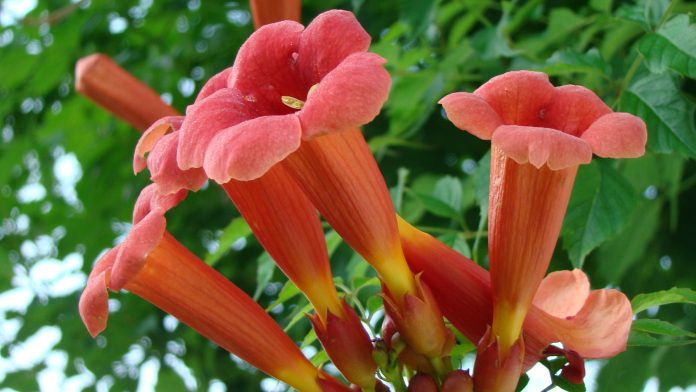First, let’s establish what we’re talking about. We all know what a daffodil looks like, right? Well, maybe. When I was a child I called all the yellow flowers of this type ”daffodils” and the white ones “narcissus”. I also know people who call the yellow ones “jonquils”. Well, botanically speaking, they’re all from the genus Narcissus. But you’re welcome to call them whatever you like.
These Narcissus like many flower groups in which many different species, and their hybrids, are grown, have been classified into groups. Here’re the major ones, which sound at times like a list of bra sizes. Keep in mind that the “cup” in the round, protruding part of the flowers is surrounded by the petals.
“Trumpet” Narcissus produces one flower per stem in which the cup is at least as long as the petals. The big yellow “King Alfred” narcissus is a classic example. Large cupped narcissi have a cup that is as big around as but shorter than that of a trumpet. I especially like the ones with the pink cups, of which Mrs. R.O. Backhouse was the first, and “Pink Beauty” is a fine modern example. Small cupped narcissi are rather flat flowers with a short cup.
With any of these, the cup may be one color, the petals another. “Double” narcissi are any that have more than one row of petals. They tend to be very fragrant, with almost a jasmine scent, and they’re often white with some yellow deep in the center, which is a popular double.
“Jonquils” are hybrids of the small, early N. jonquilla, and have as many as six flowers to a stem. No longer all yellow, the colors vary. “Tazetta” narcissi have many flowers on a stem and are fragrant, often with a small, colored cup. Paperwhite and the yellow and orange “Grand Soleil d’Or” are both nonhardy narcissi that are excellent for forcing belonging in this group.
Those in the “Poeticus” group are fragrant and have only one flower per stem, which is white with a contrasting shallow cup. In “Actaea” an old favorite, the cup is yellow-edged with red. The red-cupped “Geranium” is another good variety.
In addition, there’re a number of delightful species and their hybrids that produce miniature flowers on short stems, perfect for the rock garden or any other small-scale planting. Among these are N. bullbocodium (hoop-petticoat daffodil), which has a big cup and rather wispy petals; N. triandrus, which has little drooping flowers with pulled-back petals. “April Tears” is a lovely fragrant yellow variety and N. cyclamineus, whose petals look as if they were being blown back by the wind.
How to Grow Narcissus Flower
Give narcissi full sun or light shade. They prefer a well-drained sandy loam. Well, Plant large varieties at least 6 inches apart and at least 6 inches deep. Small varieties can be a little closer and less deep. Work some high-phosphorus fertilizer into the soil. Do not cut the foliage down until it turns brown.
Established plantings will increase by themselves but benefit from being dug up every four or five years and divided. To do this wait till the foliage has died, then dig them up with a digging fork and pull apart the bulbs that will separate easily. Either replant them right away or store them in a cool place until later in the summer.
Also Read: Magnificent Delphinium Flower Spikes in There Own Way







